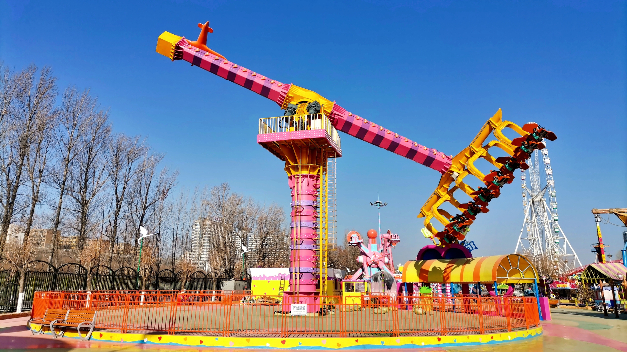- Albanian
- Arabic
- Belarusian
- Bengali
- Czech
- English
- French
- German
- Hebrew
- Hungarian
- Indonesian
- irish
- Italian
- Japanese
- kazakh
- Persian
- Russian
- Thai
- Uzbek
- Vietnamese
roller coasters design
The Art and Science of Roller Coaster Design
Roller coasters are not just thrilling rides—they are a harmonious blend of art, engineering, and psychology. From the early wooden structures of the late 19th century to the futuristic steel marvels of today, roller coaster design has evolved into a sophisticated discipline. This article explores the essential elements that contribute to the design of these exhilarating structures, highlighting both the technical and creative aspects that make roller coasters captivating to millions around the world.
The Foundations of Design
The initial phase of roller coaster design begins with a concept. Designers often conduct extensive research, looking at past rides to analyze what makes them successful and what aspects can be improved. This involves studying factors such as speed, height, track layout, and the overall experience that the ride provides. The design team considers the target demographics—whether the ride is meant for families, thrill-seekers, or a mix of both—and tailors the experience to meet those expectations.
Engineering Challenges
Once the concept is established, engineers tackle the intricate challenges of making it safe, reliable, and thrilling. The principles of physics play a crucial role here. Concepts such as gravitational force, centripetal acceleration, and energy conservation are fundamental in ensuring that the coaster delivers the intended experience. The design must ensure that the forces exerted on riders are within safe limits, crafting moments of weightlessness, intense acceleration, and exhilarating drops without compromising safety.
Steel roller coasters allow for greater design flexibility than their wooden counterparts, enabling sharper curves and taller structures. Engineers use computer simulations to model the ride experience, predicting how riders will feel at various points on the track. These simulations help optimize the ride path, balancing thrilling elements with the need for comfort and safety.
The Artistic Element
roller coasters design

While engineering is at the core of roller coaster design, the aesthetic aspect is equally important. Designers strive to create an immersive theme that enhances the ride's narrative and emotional impact. This might involve intricate theming, integrated sound effects, and vibrant colors that reflect the ride's story or atmosphere.
For instance, a coaster themed around a cryptic pirate adventure might feature rustic signs, animatronic figures, and a cleverly designed queue area that sets the tone before riders even board. This attention to detail not only enhances the overall experience but also engages riders on multiple levels, making the ride memorable long after they’ve exited.
Psychological Considerations
To create a compelling coaster, designers also need to consider the psychology of fear and excitement. The anticipation built before a significant drop can amplify the thrill, while moments of unexpected surprises keep riders engaged and alert. Designers often use elements like false drops, sudden changes in speed, and inversions to create a roller coaster experience that feels fresh and exhilarating each time.
Additionally, the ride's layout influences the rider's perception of speed and thrill. Opting for a sequence of loops, corkscrews, and rapid turns can accelerate heart rates while allowing for breathtaking views of the park or surrounding area, creating a sense of euphoria and freedom.
Conclusion
Roller coaster design is a multifaceted art that marries technical precision with imaginative creativity. With a foundation in engineering principles and an emphasis on psychological impact, designers craft thrilling experiences that captivate audiences of all ages. As technology advances and designers continue to push the boundaries, the world of roller coasters will undoubtedly keep evolving, promising even more daring and unforgettable experiences for the thrill-seekers of the future. Each ride tells a unique story, and with each click of the lift hill chain, a blend of science and artistry transforms into pure adrenaline, fueling our desire for adventure.
-
Flume Ride: Thrilling Water-Based Adventure | Hebei Zhipao Amusement Equipment Manufacturing Co., Ltd.Aug.01,2025
-
Flume Ride-Hebei Zhipao Amusement Equipment Manufacturing Co., Ltd.|Thrilling Water Attraction&NIST Safety StandardsAug.01,2025
-
Double Ferris Wheel Sale | Premium Custom RidesJul.31,2025
-
Flume Ride-Hebei Zhipao|Water-Based Attraction, Safety Standards, High-Speed DescentJul.31,2025
-
Flume Ride: Thrilling Water-Based Adventure & Advanced Engineering - Hebei ZhipaoJul.31,2025
-
Flume Ride-Hebei Zhipao Amusement Equipment Manufacturing Co., Ltd.|Thrilling Water Attraction&Customizable DesignJul.30,2025
